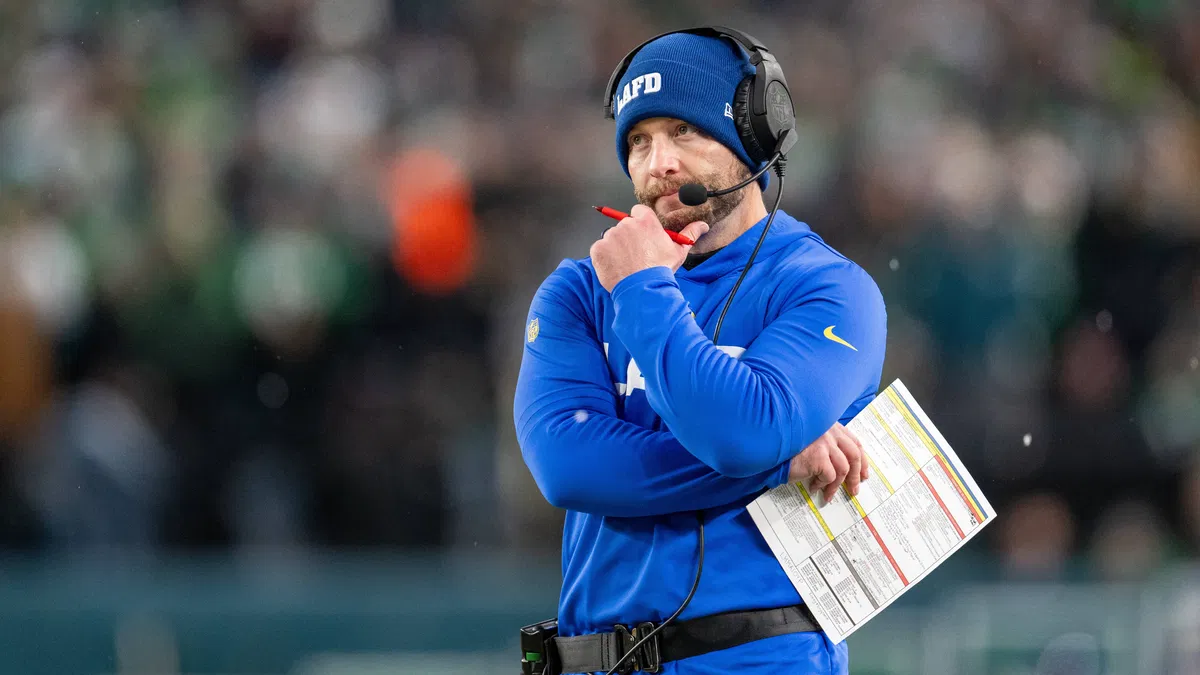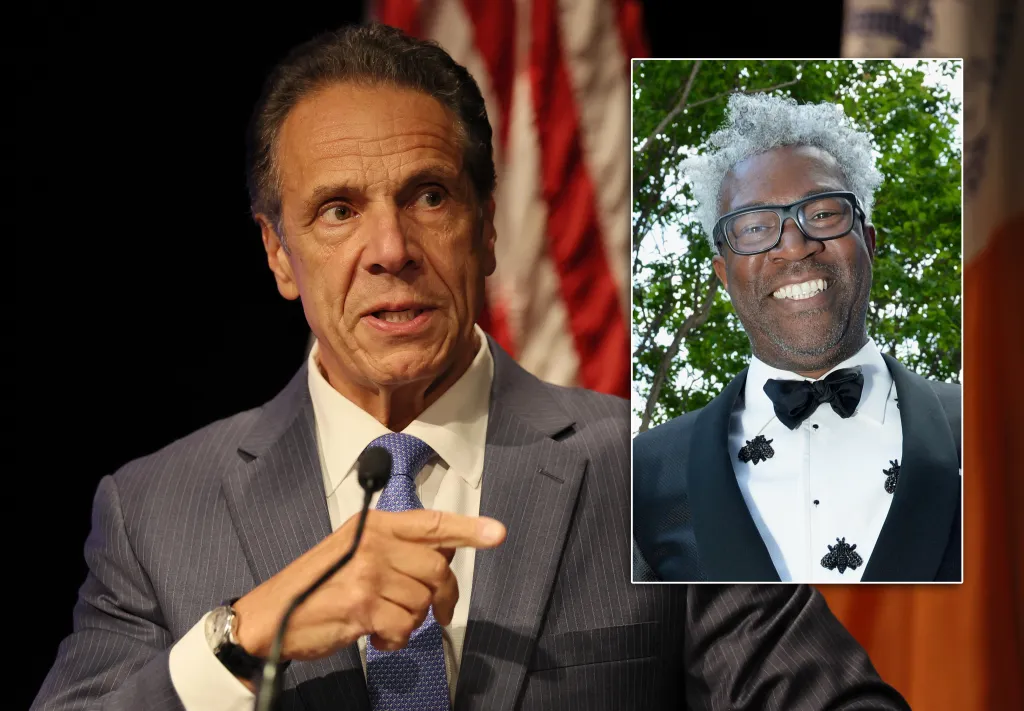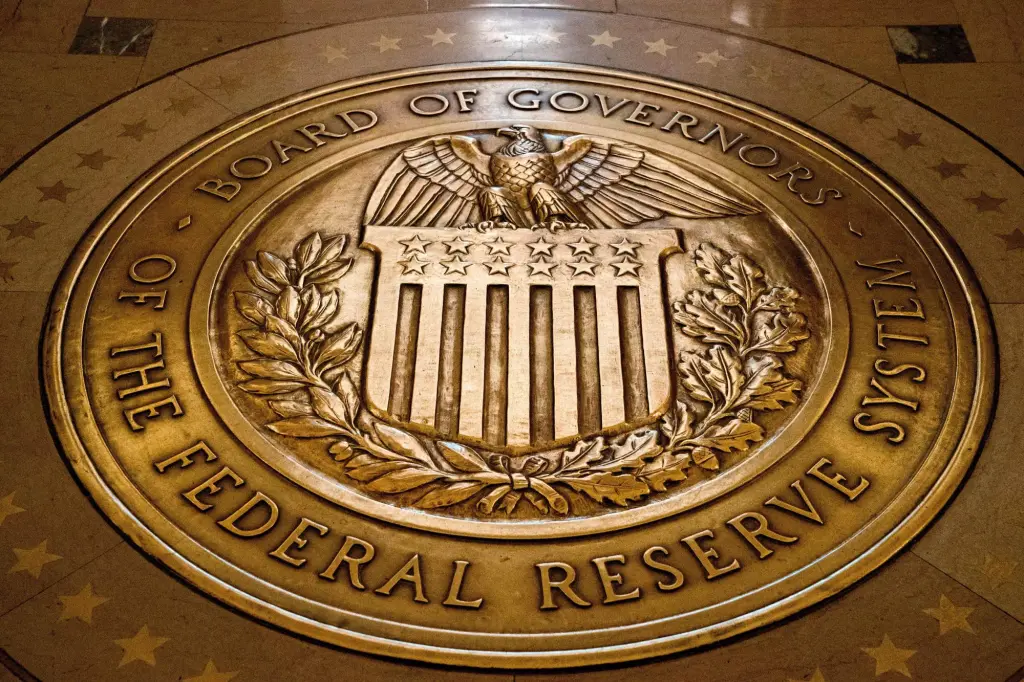Sean McVay Demands Clarity Against Tush Push as NFL Execs & Roger Goodell’s Strong Feelings Revealed

Few plays have ever been as ruthlessly effective or as divisive as the Philadelphia Eagles’ “Tush Push.” They’ve run it a staggering 163 times (combined with the Bills) over the past three seasons, converting at an absurd 87% clip. The debate, however, has now shifted from the field to the film room, and Los Angeles Rams head coach Sean McVay is demanding answers before his team faces it in Week 3.
McVay, known for his offensive genius and meticulous preparation, isn’t just complaining; he’s seeking official clarity. After reviewing the Eagles’ Week 2 win over Kansas City, a game filled with multiple, uncalled false starts on the play, Sean McVay is taking his concerns straight to the top. He stated, as shared by Adam Grosbard, “Any time that you see certain things, you have conversations with the league office to just make sure you’re understanding how is it officiated, how can we coach it. I did see some of those things last night and that’ll obviously be a big talking point because they’re such a damn good team and it’s such a successful play for them.”
His point is less about banning the play and more about understanding the murky rules that govern it. He finished his thought, noting these conversations are crucial to “operate within the confines of not getting a little bit of a rolling start before the ball is snapped.” Sean McVay’s demand for clarity cuts to the heart of a growing frustration, a feeling echoed by former player Will Compton, who bluntly tweeted: “Eagles false start every time on that tush push.” Or even Fox’s rules analyst (and former ref) Dean Blandino appeared dejected: “I am done with the tush push guys.”
ADVERTISEMENT
Article continues below this ad
So, is the Eagles’ dominance due to sheer execution, or are they operating in a gray area that officials can’t, or won’t, police? This isn’t just one coach’s gripe; it’s a microcosm of a league-wide conflict that goes all the way to Commissioner Roger Goodell’s office.
ADVERTISEMENT
Article continues below this ad
The NFL’s power brokers have already revealed their strong feelings on the matter. As NFL insider Albert Breer explained, the league’s procedure tells the whole story: “anything that they table from March to May is basically code saying that the commissioner wants to change the rule or someone high up at the league office wants to change the rule and they don’t have the votes.” Breer confirmed, “I know that there are a lot of people at the league office that feel really strongly that it should be taken out of the game.”
The core of the issue lies in a pivotal 2005 rule change. For decades, the NFL’s Rule Book explicitly outlawed any pushing or pulling of a ball carrier, a penalty that would cost a team 10 yards. But the league found it impossible to officiate these chaotic scrums downfield—was a player blocking an opponent or pushing his own teammate?
Rather than continue the confusion, they simply erased the push prohibition, leaving a gray area the Eagles would master years later. Rich McKay, Chair of the Competition Committee, highlighted the historical irony, noting the 2004 change had nothing to do with what the Eagles are doing. It was about cleaning up chaos elsewhere, but it inadvertently opened the door for Philly’s patented push.
Now, the league is caught in a bind.
The NFL’s unstoppable cheat code, a concern of Sean McVay, meets its breaking point
The play itself isn’t used enough league-wide to generate significant injury data, making a health and safety argument tough to prove. The main objections are its aesthetic brutality and the perceived unfair advantage. As Breer pointed out, “It’d be one thing if it was a cheat code for everybody, but it’s just… one team is really good at executing this one play.” That team’s 87% success rate feels less like a football play and more like a foregone conclusion.
A sentiment even Eagles coach Nick Sirianni subtly acknowledges while defending his team’s execution: “We work our (tails) off on it… First of all, it’s all about the guys, right? It’s all about the guys up front, the tight ends, Jalen, the timing of everything.” He dismisses the slow-motion replays of potential false starts, arguing, “The referees have a hard job. They have to make split-second decisions that are happening at this speed.”
The hypocrisy of the situation is palpable. Even the Buffalo Bills, whose head coach Sean McDermott has publicly called the play “potentially contrary to the health and safety of the players,” have used it themselves, proving its irresistible strategic value when inches are on the line.
ADVERTISEMENT
Article continues below this ad
The newest, and perhaps most potent, argument against it revolves around officiating. The all-22 film from the Chiefs game shows Eagles linemen clearly jumping early, a penalty that would negate the play entirely. Broadcaster Rich Eisen saw it clearly: “They had a perfect angle of the one where it was a clear false start on the Eagles. And a penalty like that removes the tush push from the table when you’re moving them back five yards.” If the play is too fast and too congested for officials to accurately call, it undermines the integrity of the game itself.



